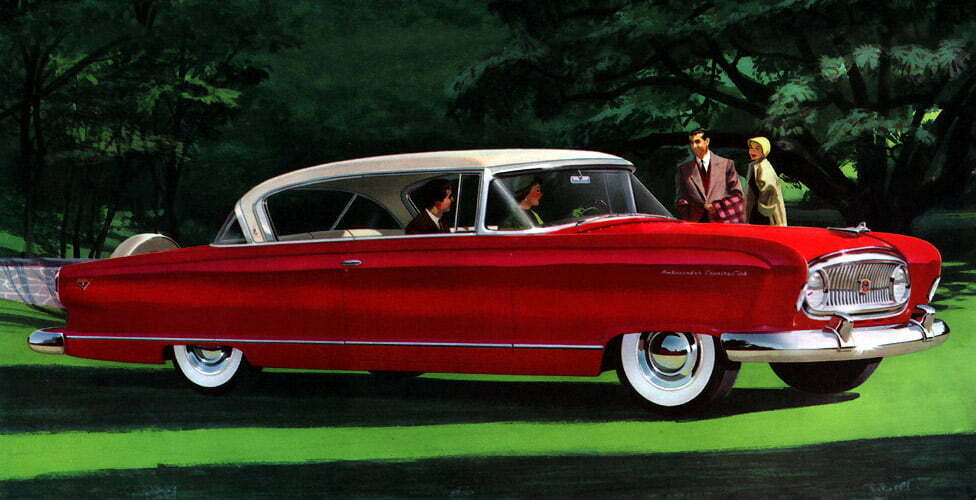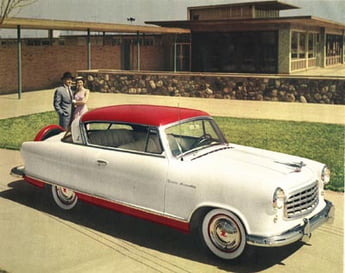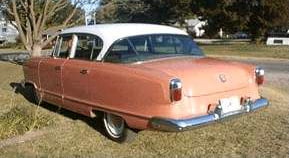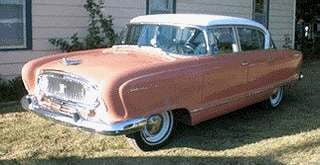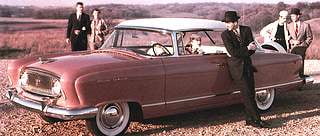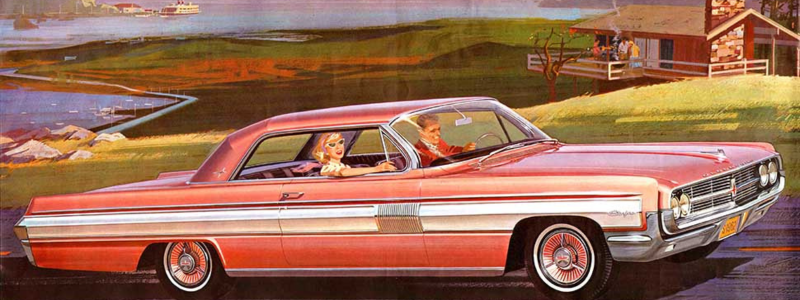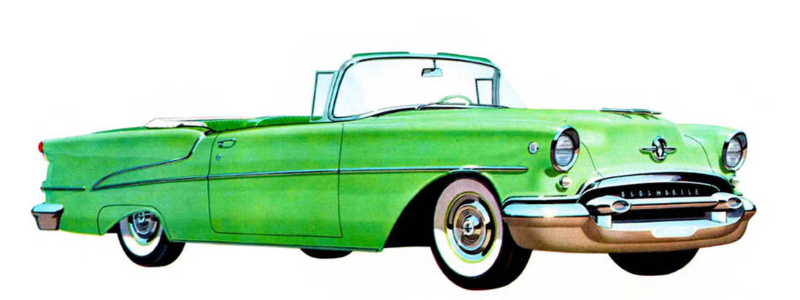General Year Information
While Nash had acquired Hudson in 1954, the 1955 new car introductions in October of that year left little time for Nash to make a major styling change what would be to what would be the Hudson line of vehicles. Instead, AMC concentrated on changes for the 1956 year when a new Nash design was in the offing. They put any design efforts into the modified Statesmen and Ambassadors chassis for the Hudson line, which would become the Wasp and Hornet. Ambassadors and Statesmen carried on with their older designs.
Given all the distractions of the merger, Nash did quite well in the year, with model year production beginning in October 1954 and resulting in almost 26 thousand Ambassadors being delivered. When counted with Rambler and Hudson sales, Nash sold over 140 thousand vehicles for the year. the thinking was that once the Hudson line got rolling, 200 vehicles were a possibility.
Chassis Information
- Wheelbase: Information Coming Soon
- Overall length: Information Coming Soon
- Front tread: Information Coming Soon
- Rear tread: Information Coming Soon
- Tires: Information Coming Soon
Models Offered
The Ambassador was a carryover, but its added wheelbase seemed to make the minor changes stand out more. The Ambassador Six and V8 received the same type of appearance changes as the 1955 Nash Statesman – including the new wraparound windshield, the new long character moldings from front to rear fenders, and moving and enclosing the headlights in a redesigned oval grille.
Thus instead of a restyle. the 1955 Nash Statesman was merely a completely revised version of the “Golden Anniversary” styling of 1952-1954. A wraparound windshield was one of the bigger changes from the 1954 cars. A long character molding was added – from front to rear fenders. The headlights were moved to enclosures in a redesigned oval grille. The car looked more modern, but was hardly changed. Regardless, the redo worked because over 14 thousand Statesman were delivered.
The 1955 Nash Rambler received a minor facelift over 1954, but was basically unchanged from the car issued in 1953, which was distinguished by a lowered hood, and enclosed front and rear fenders. That styling had been credited to Pinin Farina and did have many of the styling features of the 1952 and 1953 Golden Anniversary Ambassador and Statesman. (For more information on the 1953 Rambler, see the Tech Section on Nash vehicles). New for 1955 features included the addition of a cellular grille and full wheel cut-outs in the front fenders, versus the previous enclosed look.
Ramblers came in two-wheelbase models; 100″ for the Standard 2-door and 4-door cars and 108″ for “Custom” 2 and 4-door models as is the station wagon shown at right. As part of the merger, the Rambler was sold as the “Nash Rambler” and the “Hudson Rambler”. (See the discussion under Hudson Cars for information on the Hudson versions.
The 85 horsepower 184 cu. in. The 6-cylinder engine of previous years was dropped and was replaced by the 90 horsepower 196 cubic inch engine, which had come on the Hydra-Matic equipped cars in 1953 and 1954. It now was the solely available powerplant.
Rambler consistently held the No. 1 spot in used car value, as reflected in NADA reports of the time. As such, for 1955, 56,023 Nash Ramblers were sold. And when combined with Hudson Rambler sales, over 81 thousand were delivered to customers, which, at the time, was the highest total ever. Romney was vindicated.
Engines
This year marked the introduction of an overhead-valve V8 engine in the Ambassador line. The new powerplant was a 320 cubic-inch engine purchased from Packard in accordance with the George Mason Agreement. It was only available with Packard’s Twin Ultramatic transmission, as the existing license built Hydramatic would not bolt up and the standard manual transmissions were too fragile to handle the V8’s torque.
V-8 was distinguished from the six cylinder by “V-8” emblems on the rear fenders and “Ambassador Custom V-8” or “Ambassador Super V-8” emblems on front fenders. Styling was otherwise the same as on the Ambassador Six.
As in the previous few years, the flat-head six cylinder engine was available with single or dual carburetors. The dual carb engine sported the highest compression ratio in the industry – a whopping 8.5:1.
The 85 horsepower 184 cu. in. 6-cylinder engine of previous years was dropped and was replaced by the 90 horsepower 196 cubic inch engine, which had come on the Hydra-Matic equipped cars in 1953 and 1954. It now was the sole available powerplant.
Engine Options and Availability
- List Any Options here
Power Train Options
- List Any Options here
Other Significant Options
- List Any Options here
AMC 1955 Production Numbers
| Model | Total Production |
| Ambassador 6 | 15,204 |
| Ambassador V8 | 10,580 |
| Statesman 6 4-door | 12,877 |
| Statesman 6 2-door | 1,395 |
Rambler consistently held the No. 1 spot in used car value, as reflected in NADA reports of the time. As such, for 1955, 56,023 Nash Ramblers were sold. And when combined with Hudson Rambler sales, over 81 thousand were delivered to customers, which, at the time, was the highest total ever. Romney was vindicated.
Body Paint Color Codes
| P-1 Black | |
| P-44 Caribbean Blue Green | |
| P-61 Midshipman Blue | |
| P-62 Island Green | |
| P-64 Rio Red | |
| P-65 Coral Red | |
| P-66 Sunburst Yellow | |
| P-67 Bermuda Green | |
| P-68 Mist Blue | |
| P-69 Snowberry White | |
| P-71 Palomino Brown |
Click on the Images Below to Enlarge




